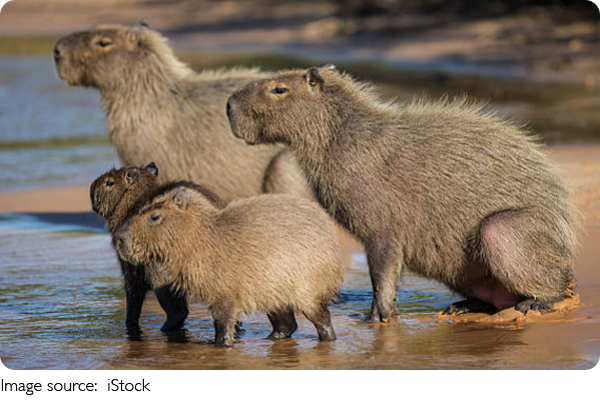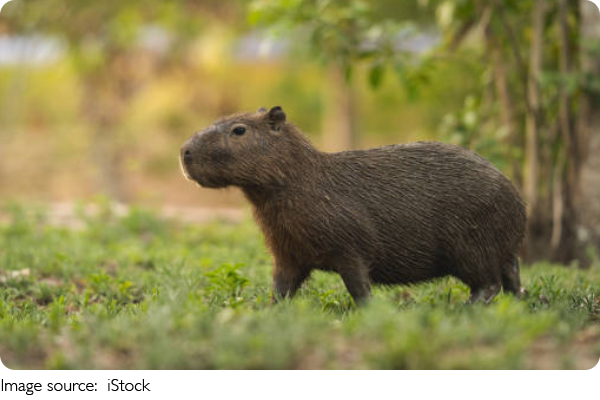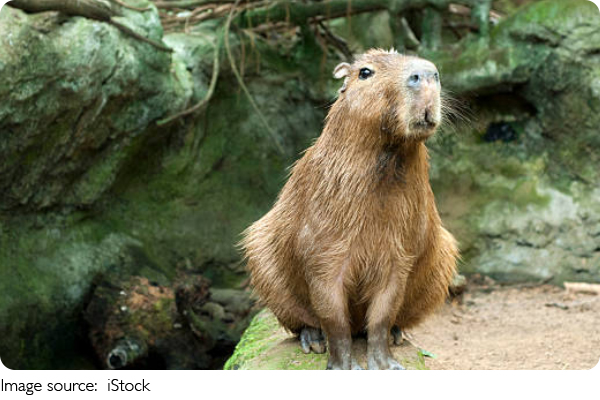Capibara vs. Mole

Do you ever feel that Capybaras and Moles look alike? This article explores the fascinating differences between the capybara, the world's largest rodent, and the mole, a small burrowing mammal.
From their evolutionary paths to their unique habitats and behaviors, these two creatures offer a glimpse into the diverse adaptations of nature.
Classification and Evolution: Two Distinct Families
The capybara (Kapibara) is the largest living rodent, belonging to the family Hydrochoeridae. Native to South America, it has a robust body up to 3 meters long and can weigh up to 70 kilograms. In contrast, the mole (Armadis) belongs to the family Talpidae and is found in the dry grasslands of Eurasia, with a body length usually less than 1 meter.
Recent studies show that capybaras are genetically closer to beavers, while moles share a common ancestor with ground squirrels. This evolutionary divergence has led to fundamental differences in their physiological structures.
Habitat Preferences: Water vs. Land
Capybaras are highly dependent on water and typically live near rivers and lakes at altitudes below 500 meters. They can hold their breath for up to 5 minutes and have a special oil film on their skin that is both waterproof and insulating. Moles, on the other hand, require at least 3 meters of sandy soil for burrowing and are found in high-altitude grasslands above 1500 meters.
Chilean ecologists have found that capybara communities can migrate up to 50 kilometers, following the direction of seasonal rains. Moles have a sophisticated temperature control system in their burrows, maintaining an internal temperature above 5°C in winter and ventilating through tunnel networks in summer.
Feeding Habits: Aquatic vs. Terrestrial Diets
Capybaras have a regular feeding schedule, primarily foraging in shallow waters during dawn and dusk, consuming up to 10% of their body weight daily. They use both incisors and molars to efficiently process aquatic plant fibers. Moles, however, store over 200 kilograms of plant seeds in their burrows, using scent marks to identify different storage areas.

Nutritional studies show that capybaras have 27 unique probiotics in their gut microbiome, enabling them to break down lignin in aquatic plants. Moles have evolved a more efficient oil storage capacity, with subcutaneous oil film up to 15% of their body weight, crucial for surviving food shortages in winter.
Reproductive Strategies: Social vs. Solitary
Capybaras exhibit social reproductive behaviors, with monogamous pairs raising offspring together. A recent study in Brazil observed a "shift parenting" system, where 3-5 adult capybaras take turns caring for young, increasing offspring survival rates to 85%. Moles, in contrast, practice polygyny, with males competing through complex tunnel mazes for mating rights.
The timing of reproductive cycles also differs: capybaras' mating season coincides with the rainy season, marked by males releasing pheromones to mark territory. Moles' mating cycles align with plant growth, with females using scent marks to attract mates.
Cultural Significance: From American Totems to Eurasian Symbols
In South American indigenous cultures, capybaras are revered as "ecological guardians," often featured in the rituals of the Mato Grosso tribe. Archaeological findings in Peru show capybara images in rock paintings dating back to 500 BC, indicating a cultural history over 3000 years.
Conservation Status: A Tale of Two Species
According to the IUCN Red List (2023), capybaras are classified as near-threatened but have seen population recovery in protected areas of Argentina and Brazil, increasing from under 10,000 in 2000 to 120,000.

Moles, however, face habitat fragmentation, with European populations declining by 37% over the past decade. This contrast highlights the varying effectiveness of conservation strategies in different regions.
The capybara and mole, though both rodents, showcase remarkable diversity in their evolution, habitats, and behaviors. Understanding these differences not only enriches our knowledge of nature but also highlights the importance of tailored conservation efforts to protect these unique species.
-
 Better Communication SkillsOften feeling misunderstood? Master these simple communication tips to build stronger relationships!
Better Communication SkillsOften feeling misunderstood? Master these simple communication tips to build stronger relationships! -
 Emotion-Mind ConnectionFeeling Upset Often? Discover How Emotional Control Is Key to Mental Health and Daily Balance!
Emotion-Mind ConnectionFeeling Upset Often? Discover How Emotional Control Is Key to Mental Health and Daily Balance! -
 Power Breakfast GuideAlways Feel Tired in the Morning? Here's How to Eat Breakfast for All-Day Energy and Focus!
Power Breakfast GuideAlways Feel Tired in the Morning? Here's How to Eat Breakfast for All-Day Energy and Focus!